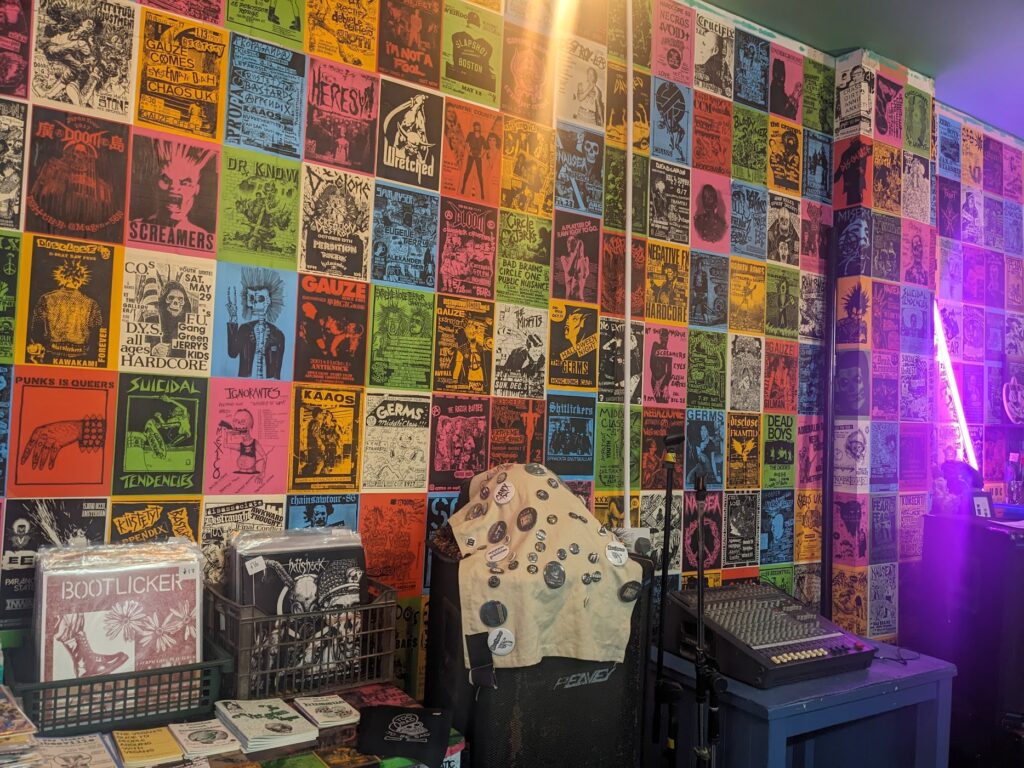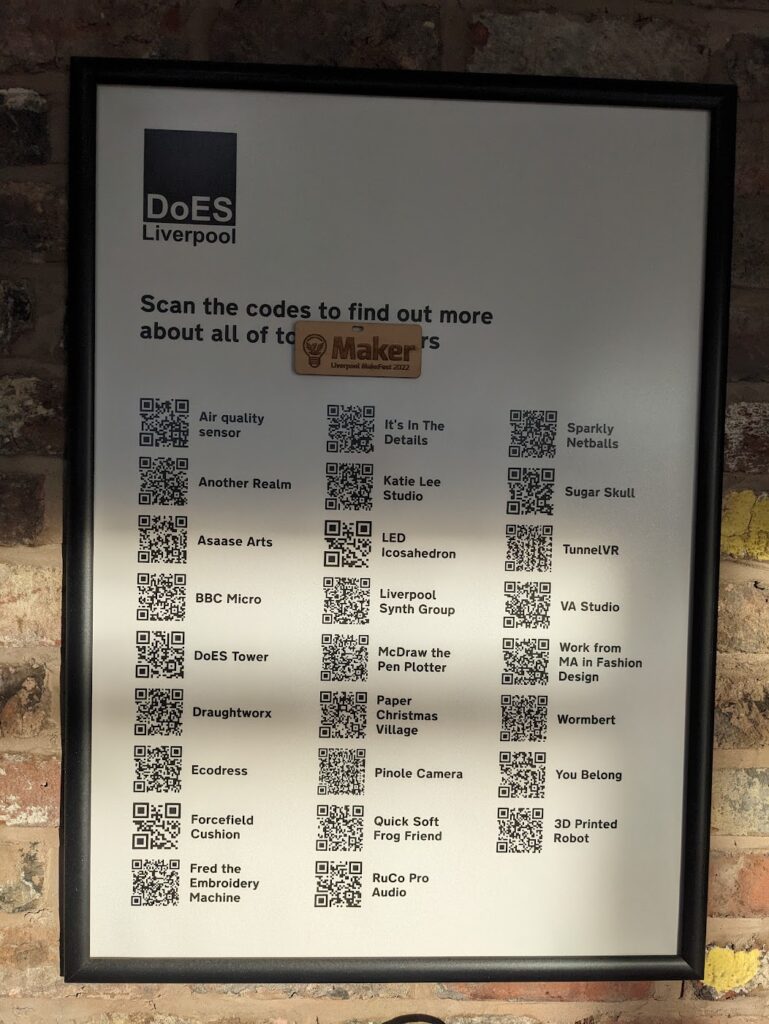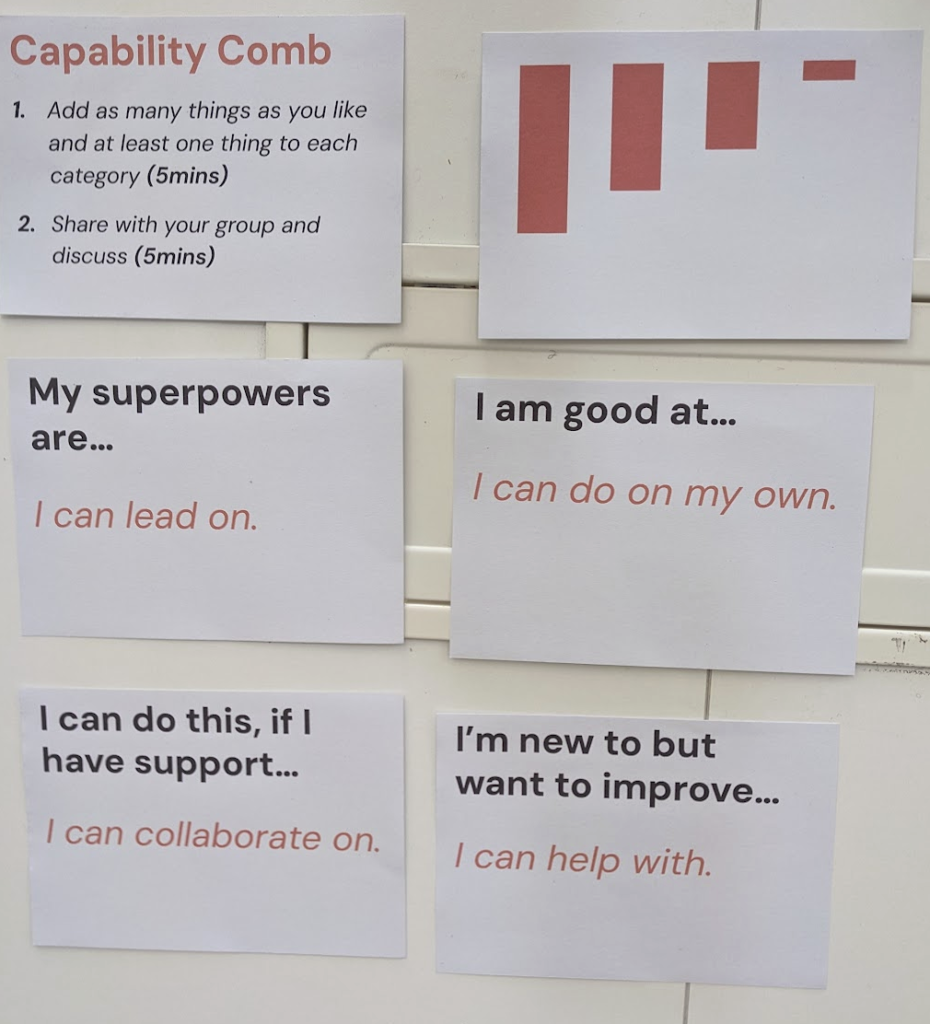I’ve been attending the online Agile in the Ether meetups, organised by Emily Webber, since 2019. It’s a brilliant community for talking through challenges and sharing ideas – so many knowledgeable people are happy to help each other out.
The community’s found lots of ways to interact remotely, but recently we decided to try an In Real Life version: meet in Liverpool for dinner, then meet the next morning for a day of workshops and a lean coffee discussion. A blog post from Emily explains lots about how the event was planned and run.
I came away from the event with piles of things I wanted to read up on, try out, and talk through further with other people. I’m planning a few posts with notes on those – here’s the first.


Building team connections and empathy quickly
Emily Webber started by asking how we were onboarded onto the last team we joined. This varies hugely, and can make a real difference to how well a team works together. We tried out two tools for building team connections – a team manual and the capability comb – and discussed how to make most effective use of them.

One issue with tools like these is the “new year’s resolution” problem: write once, tuck away in a drawer, and get surprised when you find them again. How can we help keep them relevant?
Little mentions of them can help – noting that you’re sharing info a certain way because of x, or asking if this task’s something that a specific person might like to get involved in because of y – helps people feel their contributions are making a difference, and might prompt others to reread and make use of these docs.
Just like the team’s day-to-day work, having a structure to use or revisit these will keep them in mind. Refer to the capability comb when planning new work, or in retros? Decide landmarks where you’ll take a deeper look and update these things? I like John Cutler’s “1s and 3s” scale as a way to help think about rhythms like this.
For a lot of teams, this might be an activity done only rarely. Could we use the “if it hurts, do it more often” idea (because frequency reduces difficulty)? I’ve owned the Dynamic Reteaming book for a while but only skimmed it – that has lots of advice on deliberately mixing up teams, and how to make this kind of onboarding and team forming a “little and often” habit. I’ve had a chance to talk with people who’ve used this approach for several years – see 3 years of self-selection teaming at Redgate – and it’s something I’d like to learn more about.
Lastly: I read Liftoff: start and sustain successful agile teams a few years ago, and remember it had lots of advice about keeping things like this useful and relevant through the life of a team. If I haven’t given myself too much homework already, I might read that again.
More soon
Rather than a mutli-thousand-word blog post, I’ll pause here. Back later for more on the DORA metrics, domain storytelling, and what to do about bureaucracy.